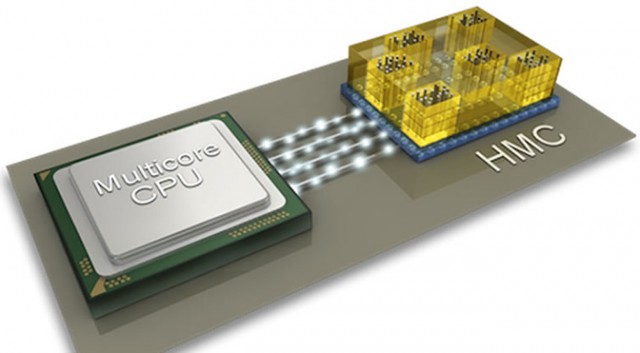Micron needs to shake up decades-old memory usage with its Hybrid Memory Cube engineering, which will be accessible as an option to DRAM modules beginning in the first quarter one year from now.
The memory sort, which was initially affirmed in 2011, will give a highly required speed and force productivity redesign from customary DDR memory. The primary HMC usage will be in servers and elite machines beginning in ahead of schedule 2015, and could be considered for utilization in laptops, said Mike Black, innovation strategist at Micron.
“Anyplace a framework has been tested by data transmission, and DDR stage does not give enough transfer speed, HMC is a decent fit,” Black said. For the present, the engineering could help execution in supercomputing, distributed computing and in-memory databases, Black said.
HMC memory gives 15 times more data transmission than ordinary Ddr3 DRAM modules, and draws 70 percent less vitality. It is additionally gives five times more transmission capacity than the rising Ddr4 memory, while devouring fundamentally less measures of vitality.

With HMC, the memory modules are put as stacked chips in solid shapes instead of being set level beside one another on a motherboard. The stacked memory chips are joined through a wire-like association called Through Silicon Via (TSV), which brings execution points of interest over customary DRAM.
Motherboards will send with HMC welded on sheets by the CPU or other preparing units, Black said.
“It’s not a DIMM configuration,” Black said. DIMM is a Ddr3 or Ddr4 memory module that might be embedded into openings on the motherboard.
HMC chips with limits of 4gb and 8gb have officially delivered to server and chip organizations for testing. The main HMC modules will be utilized on Fpgas (field programmable entryway shows) and are likewise being put by Intel on chipsets close by the most recent Xeon Phi supercomputing chips code-named Knights Landing, Black said.
HMC is firmly coupled with the multicore Knights Landing CPU and is a quicker memory choice custom-made for supercomputing applications. The Knights Landing chip additionally has the slower Ddr4 memory, which acts more like transitory store and might be utilized for execution of ordinary code.
DDR and HMC offer peculiarities like the powerlessness to store information after machines are turned off. Notwithstanding, HMC has more blunder amendment, debug and strength characteristics with on-chip gimmicks and rationale layers, Black said.
HMC is likewise a scaffold to fresher memory advances like MRAM (magnetoresistive RAM), RRAM (resistive RAM) and PCM (stage change memory), which can store information much like glimmer stockpiling, however are still years far from broad appropriation. HP is conveying its own particular manifestation of nonvolatile memory called Memristor
Micron likewise makes and offers Ddr3 memory, and has additionally declared Ddr4 memory modules through its Crucial subsidiary.



